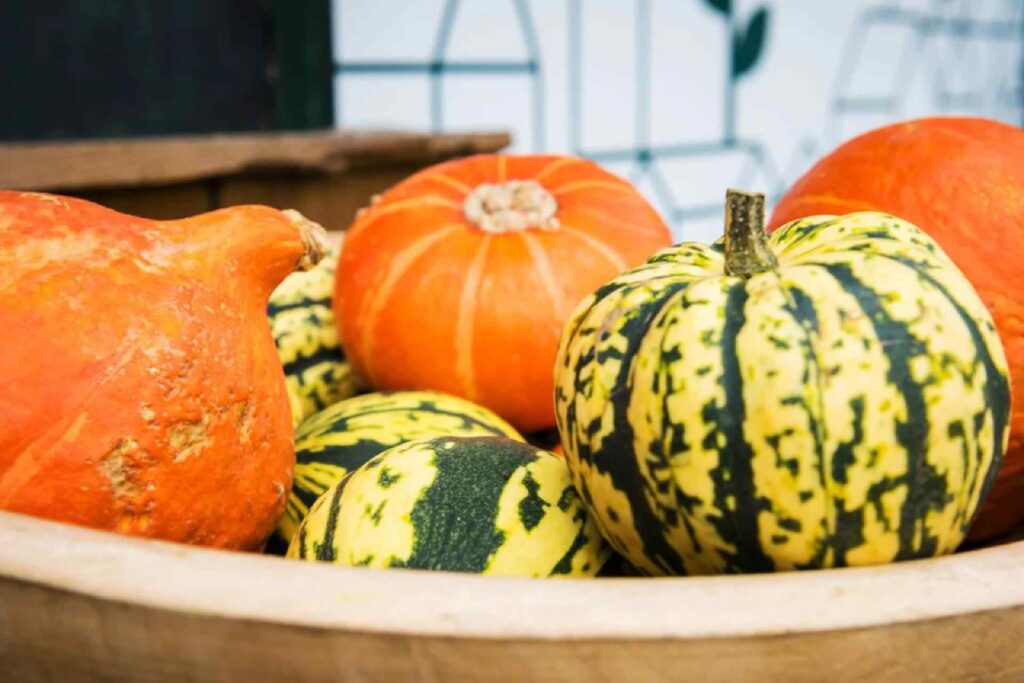
Beautiful, delicious and autumnal, squash is the symbol of Halloween and can be cooked in a thousand ways. Harvested between late summer and early fall, this vegetable can be stored for months without compromising the flavor of its delicious flesh. We let ourselves be charmed by its beautiful shape and often buy it whole. Once at home, however, the question arises: how to store squash?
Whole or in pieces, refrigerated or frozen, canned: it all depends on how you want to use it later. There are, in fact, several ways to preserve pumpkins, squash, and other cucurbits. Here are our tips for the optimal preservation of these delicious autumn vegetables.
How To Store Squash? – Different types of squash
Butternut, pumpkin, potimarron, pumpkin… Do you know the difference between the different types of squash? How many do you know? Although they all belong to the Cucurbitaceae botanical family. But each of these squash has its own unique characteristics, which make it special.
Method 1: whole
Proper storage of squash begins in the field. Vegetables intended for storage must indeed be harvested as late as possible. To allow the skin to become thick enough to protect the squash well over time. They need to be harvested before the first frosts, to prevent them from rotting.
At harvest time, it is recommended not to completely cut the peduncle, but to leave at least 5 cm attached to the squash, since this will help its proper storage. Before storing it, wash it with water and dry it well. Pumpkins, squashes, and whole pumpkins can be stored at a temperature of around 15°C, in a dry and well-ventilated place, with the peduncle facing upwards. In this way, they can be kept between 3 and 6 months.
Method 2: raw, in the fridge
Raw squash cut into quarters and with the skin on can be stored in the refrigerator for two or three days, before being cooked. If you bought it whole, you will have to start by cutting it. Insert the tip of a knife into the central part of the squash, next to the stem, and cut the vegetable in half, following its vertical lines. Remove the seeds from the center of the squash with a spoon…don’t throw them away! We will explain below how to use them.
Then cut each half of the squash into quarters, which you can store in the refrigerator. For optimal conservation, cover the part of the pulp not protected by the skin with cling film.
Method 4: raw, in the freezer
If you do not plan to consume the squash within 3 days, we advise you to freeze it, raw or cooked. If you choose to freeze it raw, when you are going to use it in the kitchen you must do so without thawing it. For this reason, before placing it in the freezer, it is best to cut the squash into the format that will be most useful for cooking. Large, small or medium cubes, rings, or strips, the choice is yours. Once cut, be sure to dry the squash pieces well and place them in a freezer bag, which you will put in the freezer.
Method 3: cooked, in the refrigerator
Want to save already cooked squash? Whichever cooking method you choose, after letting it cool, place it in an airtight container (to prevent it from absorbing other fridge smells) and place it in the refrigerator. It can be kept like this for 3 or 4 days.
Method 5: cooked, in the freezer
Freezing the squash after cooking can be helpful to keep it a little longer. So it is available at any time to make your favorite recipes based on this vegetable. A few minutes in the microwave will suffice to thaw it. All pumpkin-based preparations can be frozen: whether steamed, in soup, pan-fried, grilled, or baked, all you have to do is place the squash in a freezer bag or in an airtight container and put it in the freezer.
Method 5: canned
Another method of preserving squash to enjoy during the colder months of the year is to can it. How about, for example, cutting your pumpkins, pumpkins, squashes, and pumpkins into small pieces and making delicious pickles? It’s a way to keep this vegetable in sweet and sour mode, making it perfect for giving a tangy flavor note to your salads, cheese platters, and raclettes. Click here to find out how to prepare them at home.
Storing seeds
Don’t throw away the pumpkin seeds! Pumpkin, butternut squash, squash, and pumpkin seeds are rich in nutrients (vitamins, minerals, antioxidants) and promote the proper functioning of our immune system. Once collected and cleaned, these seeds can enrich the taste and texture of your soups, sauces, stuffings, and salads.